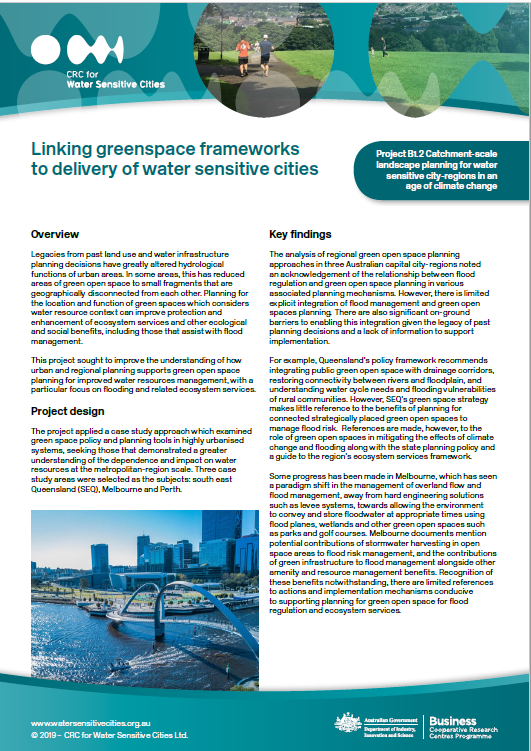Linking greenspace frameworks to delivery of water sensitive cities
We’ve just released a new fact sheet exploring how integrating urban and regional planning with green space planning results in better water resources management, particularly flood management.
When approached together, both planning agendas can protect and enhance ecosystem services and have other ecological and social benefits, especially flood management.
The new fact sheet summarises the results of Project B1.2—Catchment-scale landscape planning for water sensitive city-regions in an age of climate change. This project aimed to better understand how urban and regional planning supports green open space planning for improved water resources management, particularly flooding and related ecosystem services.
Using regional green open space planning approaches from three Australian capital city regions (Brisbane, Melbourne and Perth), the project had two major findings:
- There’s an acknowledgement of the relationship between flood regulation and green open space planning in various associated planning mechanisms, but limited explicit integration of the two.
- There are significant on-ground barriers to enabling this integration, given the legacy of past planning decisions and a lack of information to support implementation.
The project concluded the goal should be to increase the volume of stormwater retained in the landscape (particularly in upper catchment areas) and flowing through green spaces before entering drainage/waterways. Achieving this may not only help with flood management, but also water demand management, the ecological health of waterways, and urban amenity.
As we know, current research strongly indicates there is a need for better integration between land use planning (including green open space planning) and water resource management, and the fact sheet outlines some significant opportunities.
